Fenix LR35R review
Fenix LR35 rechargeable flashlight specifications
| Brand / Model | Fenix LR35R |
|---|---|
| Category | General purpose |
| LED | 6*Luminus SST40 |
| Max. output | 10,000 lumens |
| Max. beam intensity | 63,200 cd |
| Battery config. | 2*21700 |
| Modes | 5 |
| Blinkies | Only a Strobe mode |
| Reflector | Smooth |
| Waterproof | IP68 |
| Review date | August 2020 |
Review intro:
The Fenix LR35R looks much like the Fenix TK35, but it’s not a ‘Tactical flashlight’. There is only 1 side switch and no rear switch, which makes it less useful for ’emergency’ situations for first responders or security. Its design is almost a decade old, but it is still making good sales, I suppose. Otherwise, they would have dropped the design a long time ago.
But still, a portable 10,000-lumen flashlight from Fenix is interesting. I bought one to test and see what this is all about. Even before I finish the review, I expect the performance to be the same as they claim. But we’ll see if my trust in Fenix’s claims is justified.
What you’ll get:
Honestly, I am a little disappointed with the packaging at this price point. It’s almost $200, and this kind of packaging is a bit… underwhelming. I can’t imagine anybody opening this box without tearing it.
- The flashlight: Fenix LR35R
- Lanyard
- Extra O-ring
- USB-C cable
- 21700 batteries *2
- Holster
- Warranty card
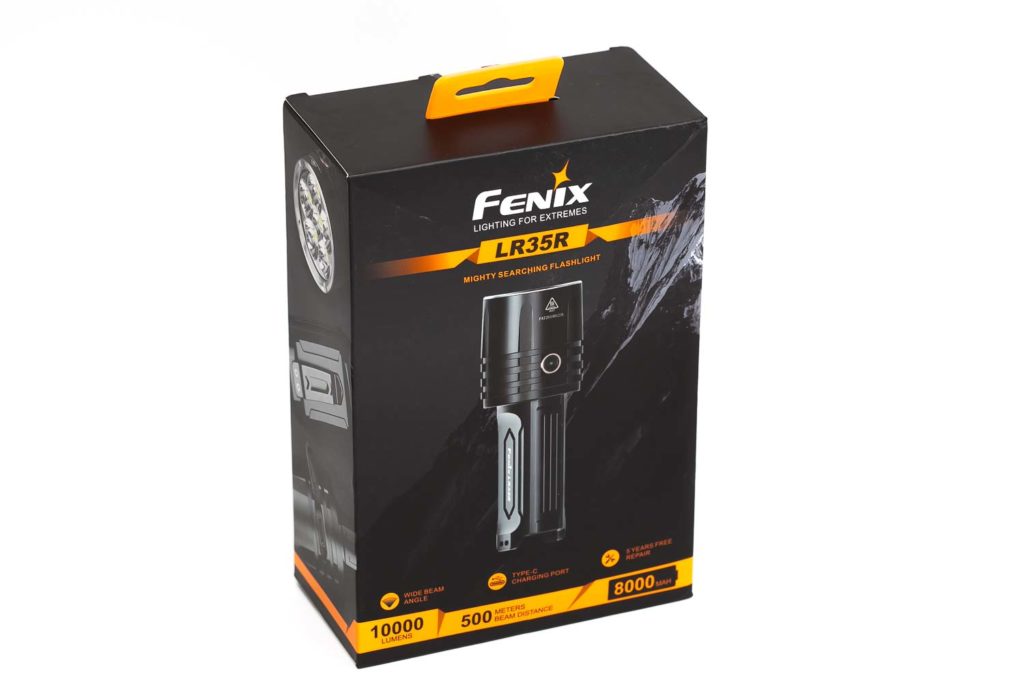
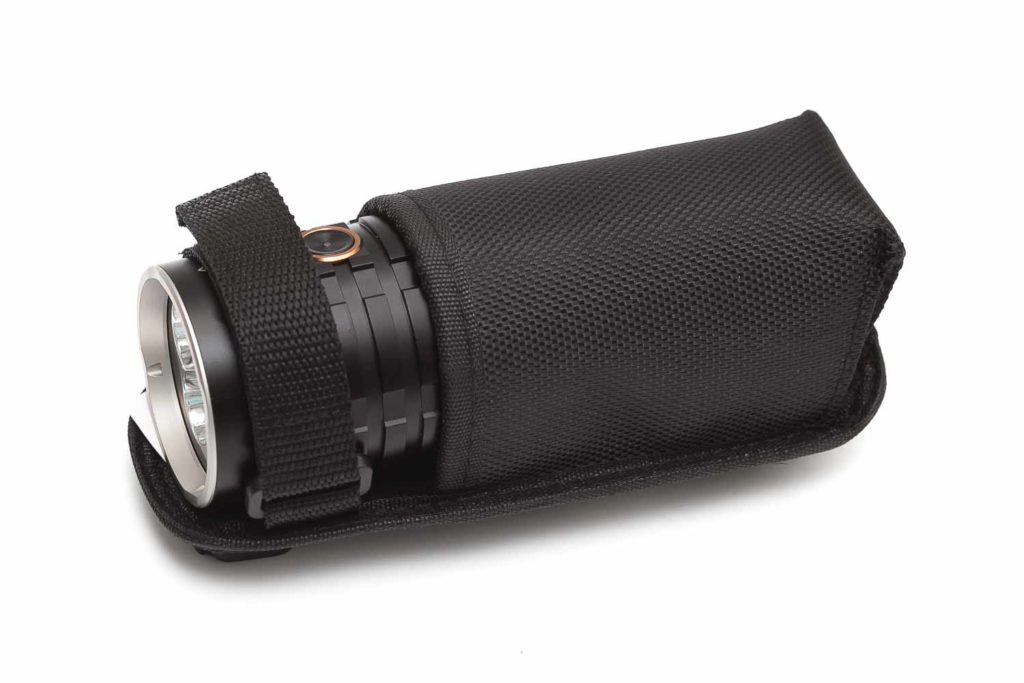
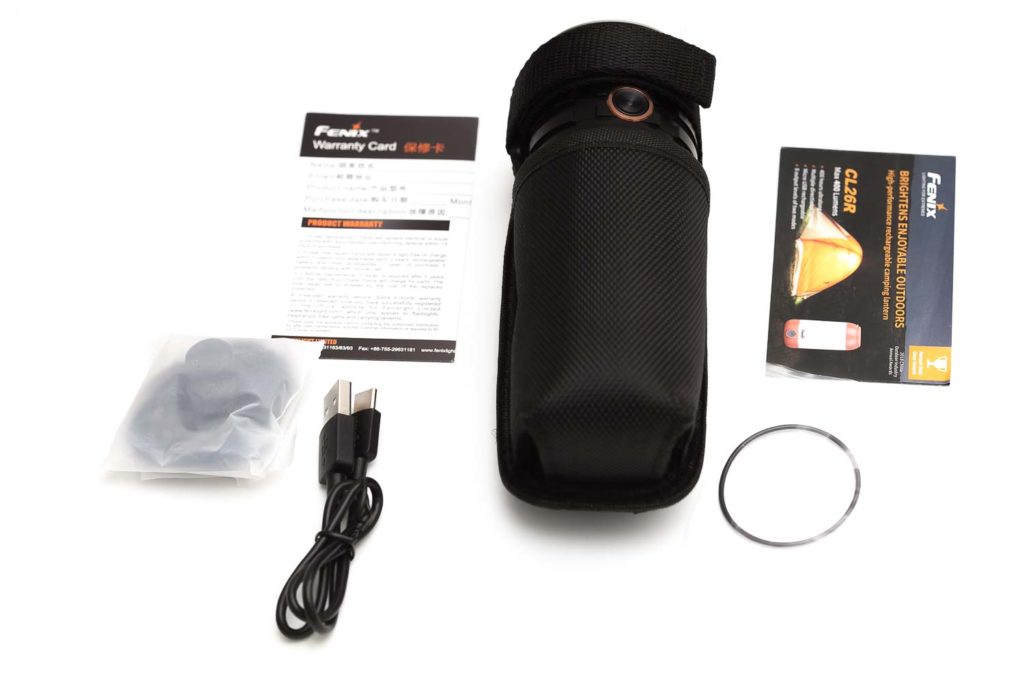
Handling of the light
The Fenix LR35R has a dual battery configuration with 2*21700 in parallel, next to each other. This makes it a flat, still wide flashlight body that helps with grip. It fits my hands really nicely. And that is probably one reason why Fenix still produces this type of flashlight, even after almost a decade since they first announced it.
The side switch is conveniently located on the top of the head when it sits in your hand. I don’t honestly know why they moved from the tactical style to this type of flashlight, but I can understand that a 1-handed operation is something users would have recommended.
The pocket clip is attached on 1 of the flat sides of the body, and I’m curious if people think this is a good move. The clip’s opening is pretty close to the head, which is sticking out quite a bit. I tried to attach it to a thick belt, but that is difficult at this angle. Narrower belts are okay, and of course, pockets are no problem at all. I hope you can see what I mean in the pictures.
Still, there is 1 thing they could have improved: When you hold the flashlight with the switch on top, the clip is on your right side. So if you just want to attach the clip and are right-handed, you have to turn the flashlight 180 degrees to clip it onto your belt/pocket.
The clip is positioned correctly if you insert the flashlight in your pocket. So, depending on how you carry it (right hand vs left hand) and how you use the pocket clip, it may be a small (or even big) annoyance for some.
Fenix added a nice lanyard to the package that I appreciate. And if you’re not into pocket clips or lanyards, you can also use the included holster. It’s a nice quality holster with velcro tape at the top.
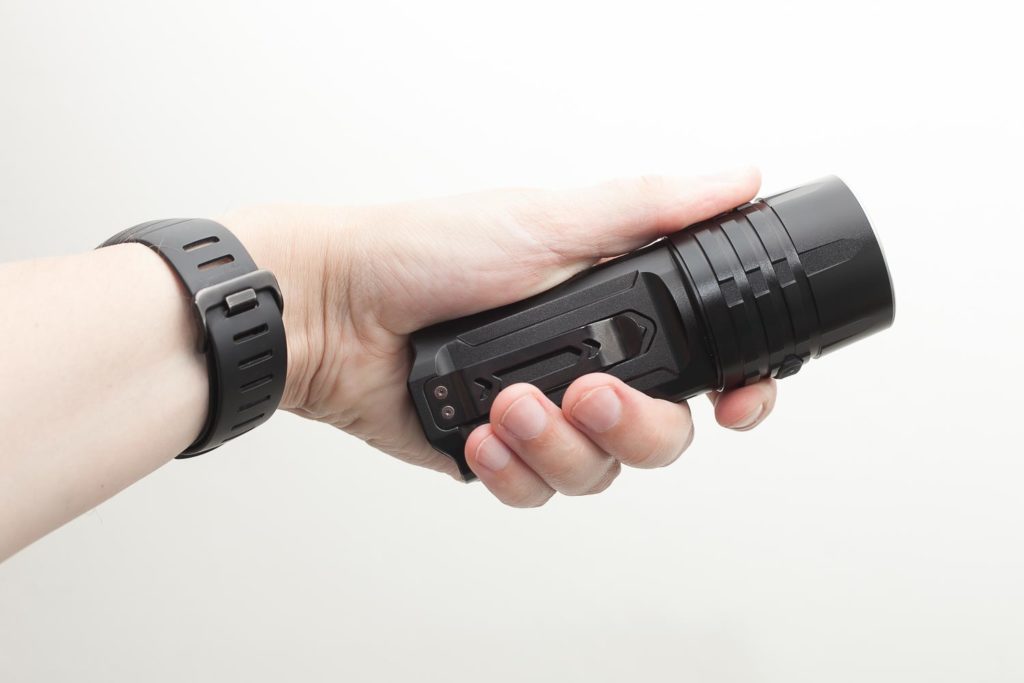
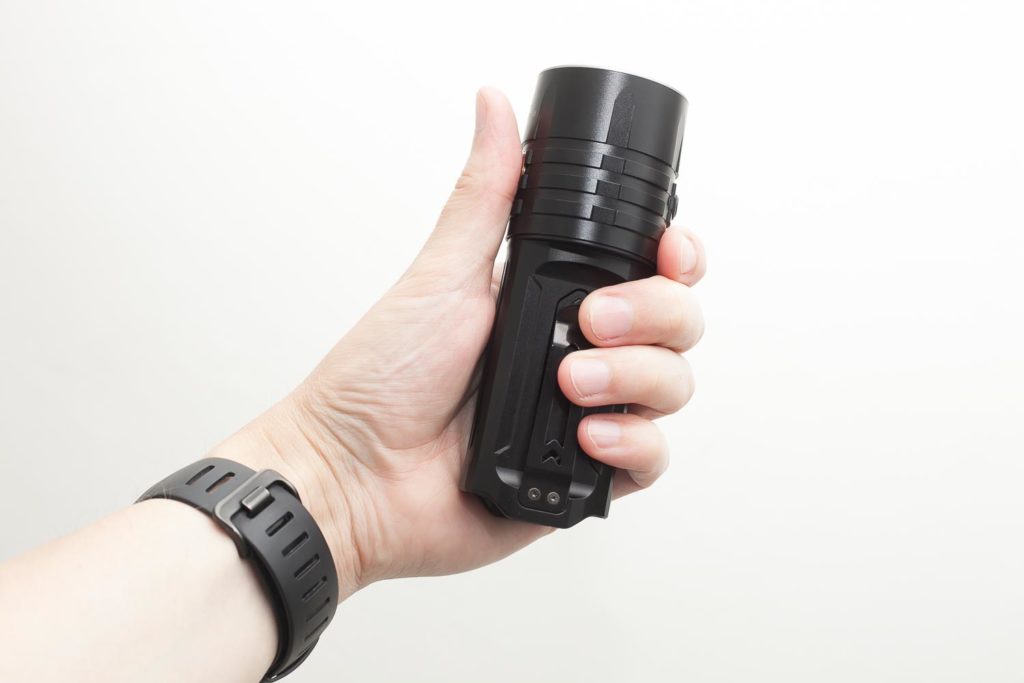
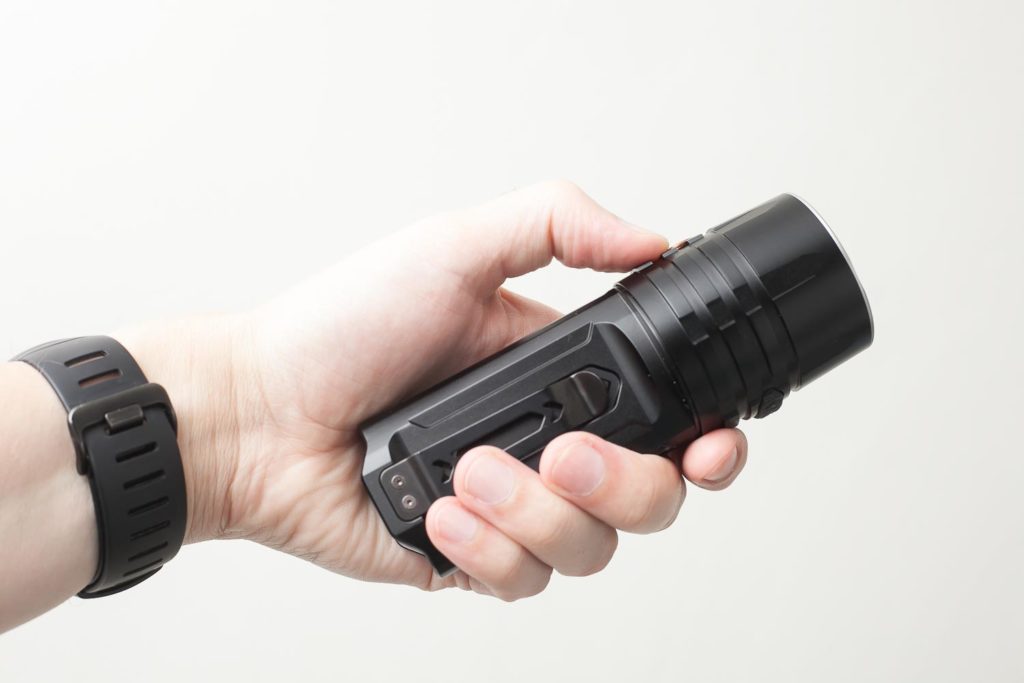
Build Quality, knurling, threads, and anodization
Anyone who owns Fenix flashlights knows of their quality. The LR35R is a well-machined flashlight without any annoying sharp edges. This is one benefit of having a long-selling flashlight in your lineup. The design can be improved incrementally and still keep the flashlight popular. Every few years, they add a new feature or LED, which can soon be put onto the market.
Even though the quality of the machining and threads is very high, I don’t particularly like the shiny finish on Fenix flashlights. I rather like a matte finish to give it a bit of a more exclusive look.
One thing I like about the threads is the ‘lock’ system at the end. This is something I haven’t seen other flashlight manufacturers do. This really helps with lining up all the parts of the flashlight. Take a look at the images to see how aligned the switch is with the body. I like that a lot.
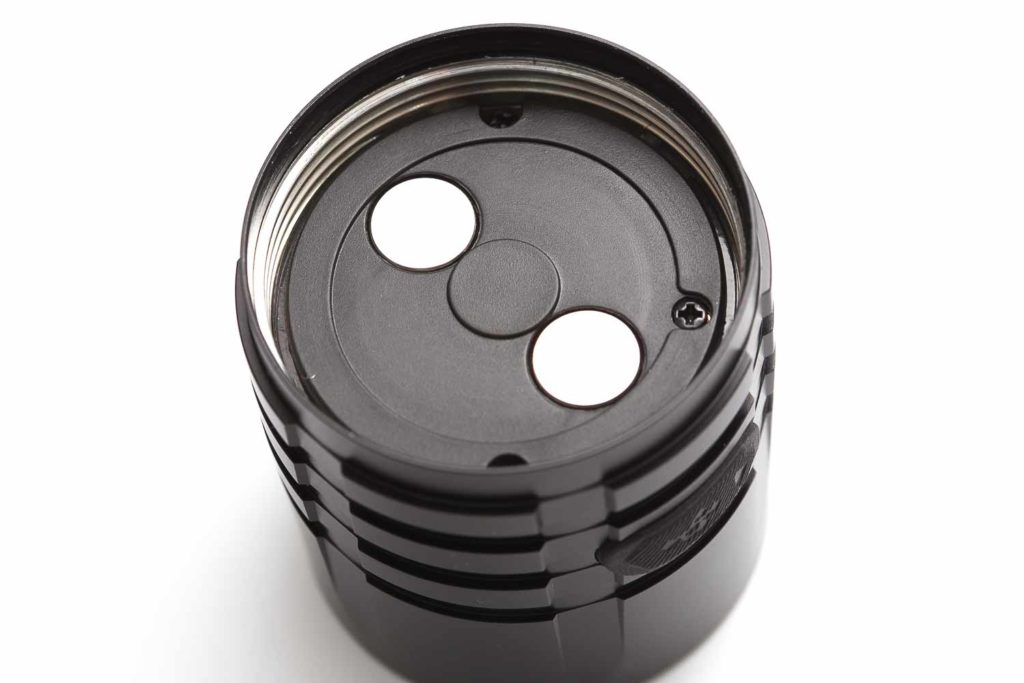
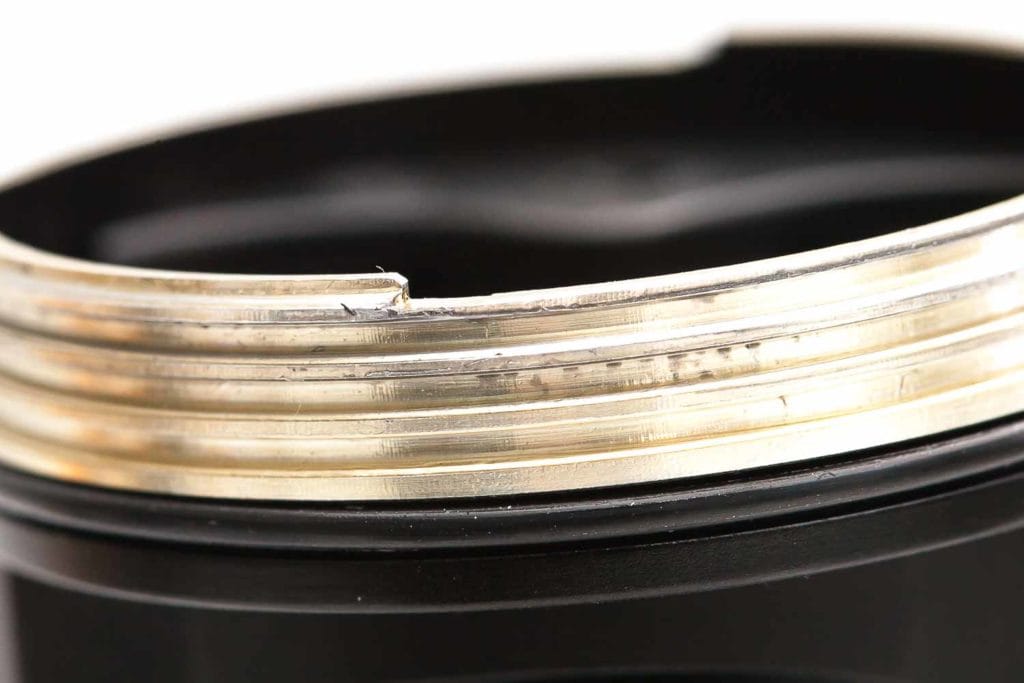
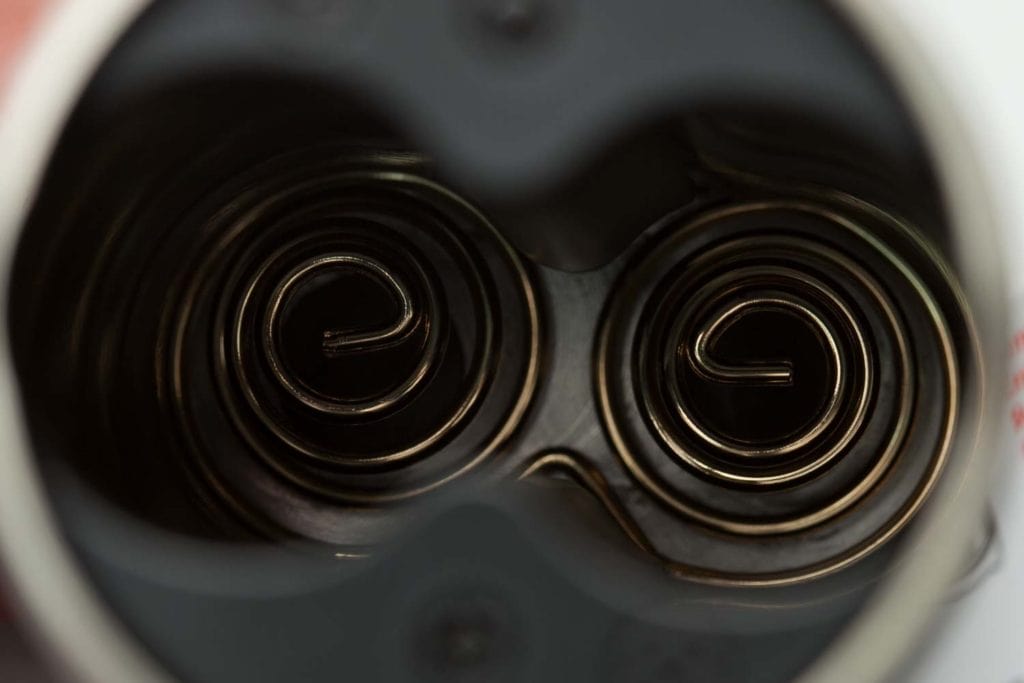
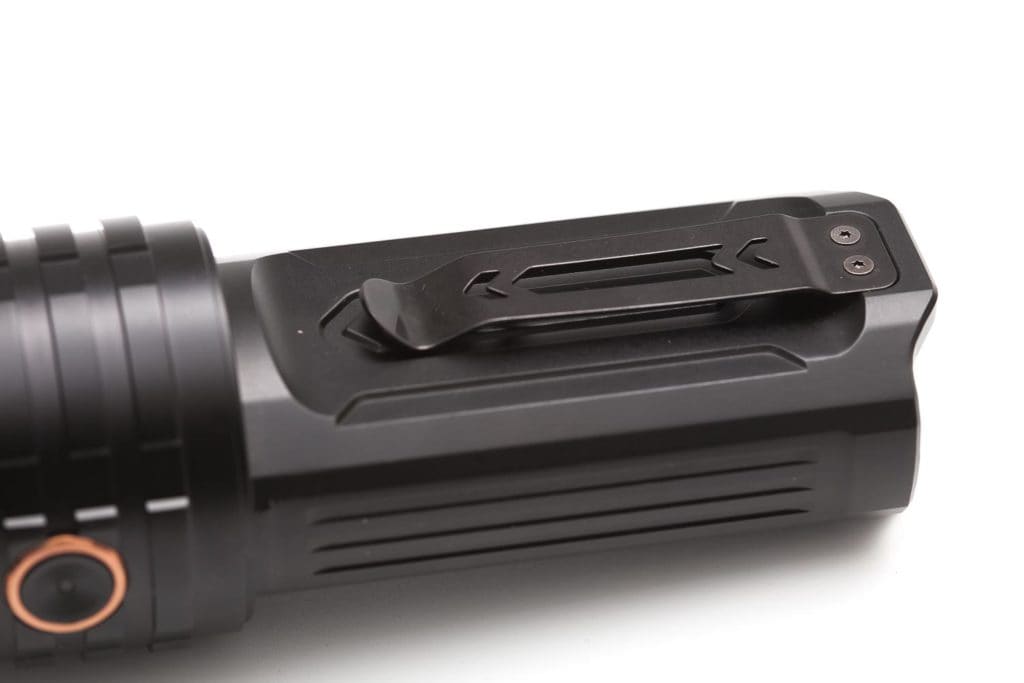
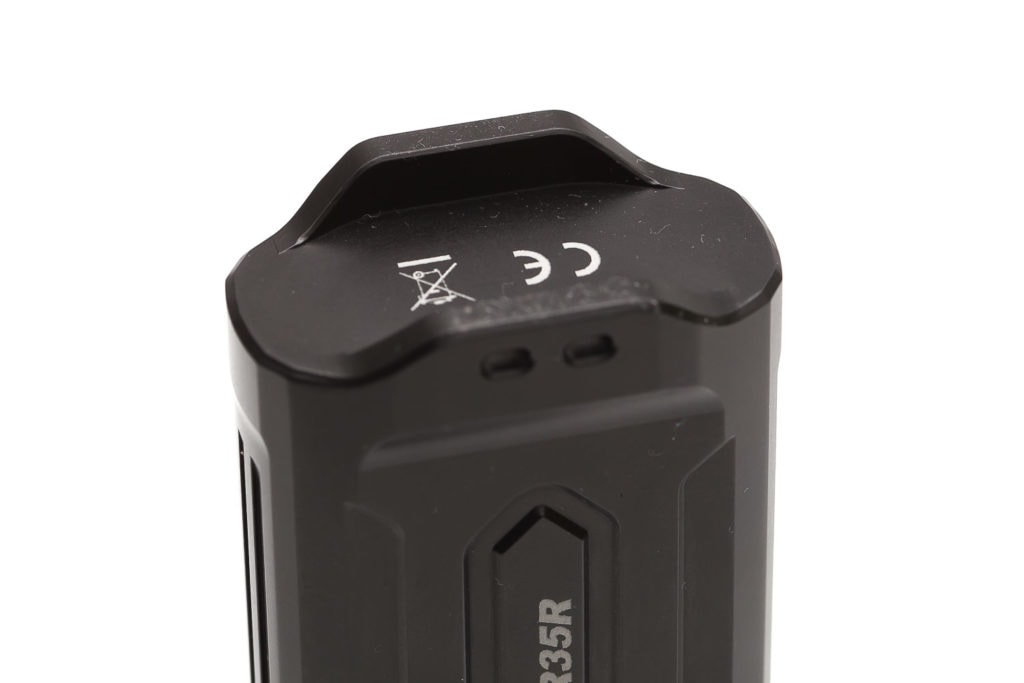
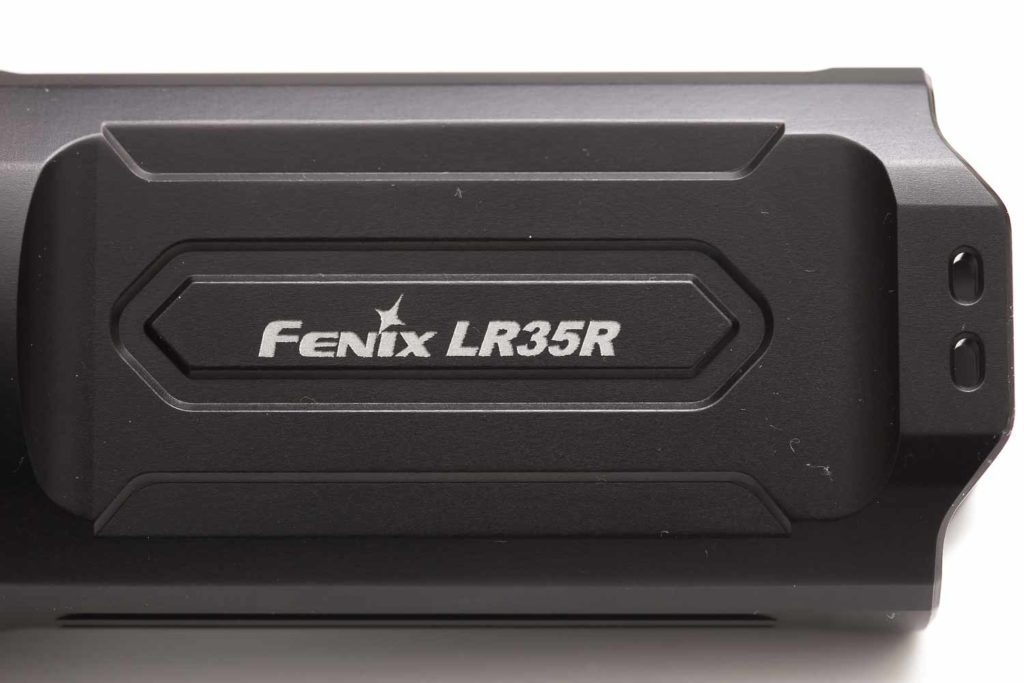
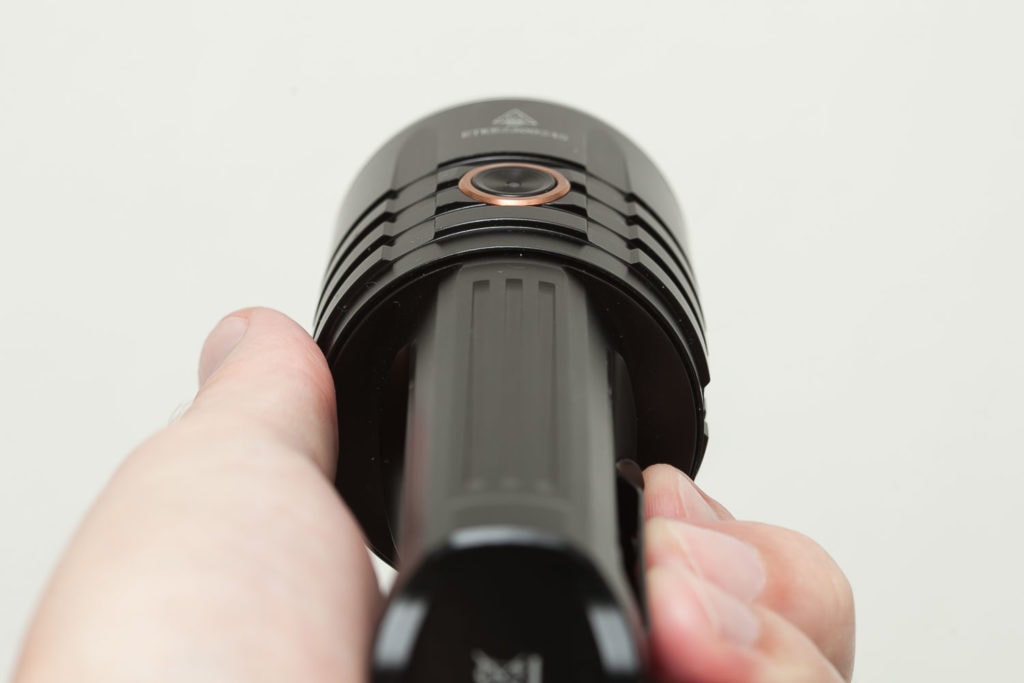
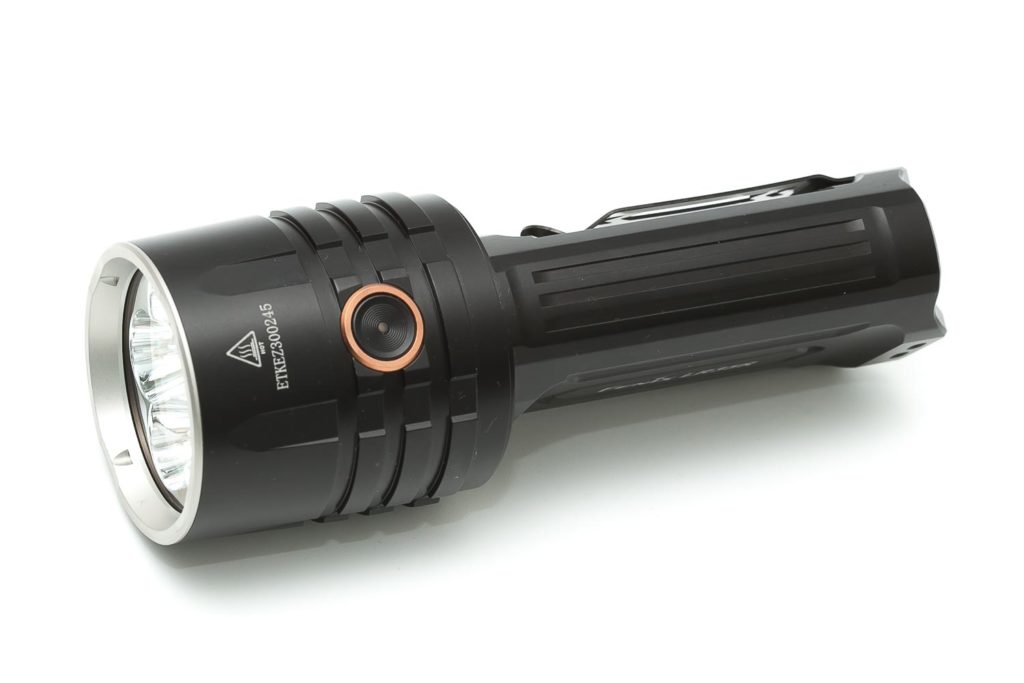
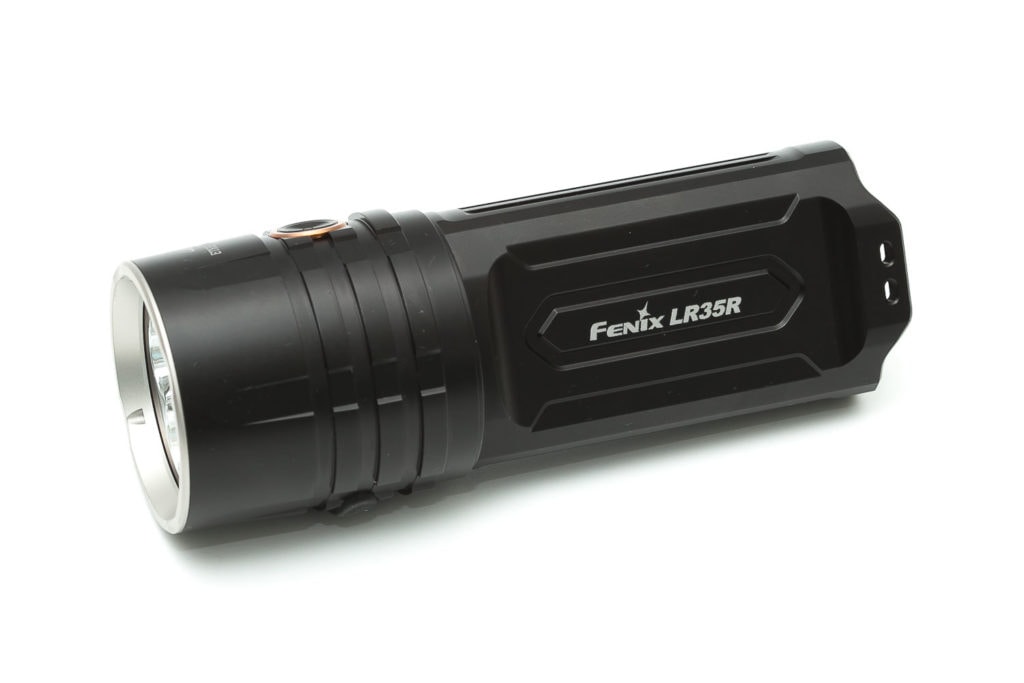
LEDs, Lens, Bezel, and Reflector
Fenix uses 6* Luminus SST40 LEDs to power the LR35R. These LEDs can push way beyond 1000 lumens per LED. Of course, you need a lot of Amps and enough heatsinking to reach 2000+ lumens from a single LED, but it’s possible. Here is a test that shows what an SST40 is capable of.
None of the main flashlight manufacturers really show the bin or tint the LEDs are. So I don’t have anything to say about it. The beam itself is a little on the greenish side. And although this may not be ideal, in most cases, ‘seeing something’ is more important than ‘seeing the right color’ or something.
All LEDs sit behind a shallow, smooth reflector protected by a glass lens with an anti-reflective coating. That lens is again protected by a stainless steel bezel—not a shiny one, but a matte one. So I give them credit for doing that.
The beam has a distinct hotspot, which is pretty large, but even with 6 LEDs, it’s very round. There are no strange artifacts in the beam that you sometimes see with Multi-LED flashlights. All LEDs are flower-like, with 1 LED in the middle and 5 LEDs around that 1 LED. This probably helps to keep the beam ’roundish’. At least on a wall about 3 meters/ 10 feet away.
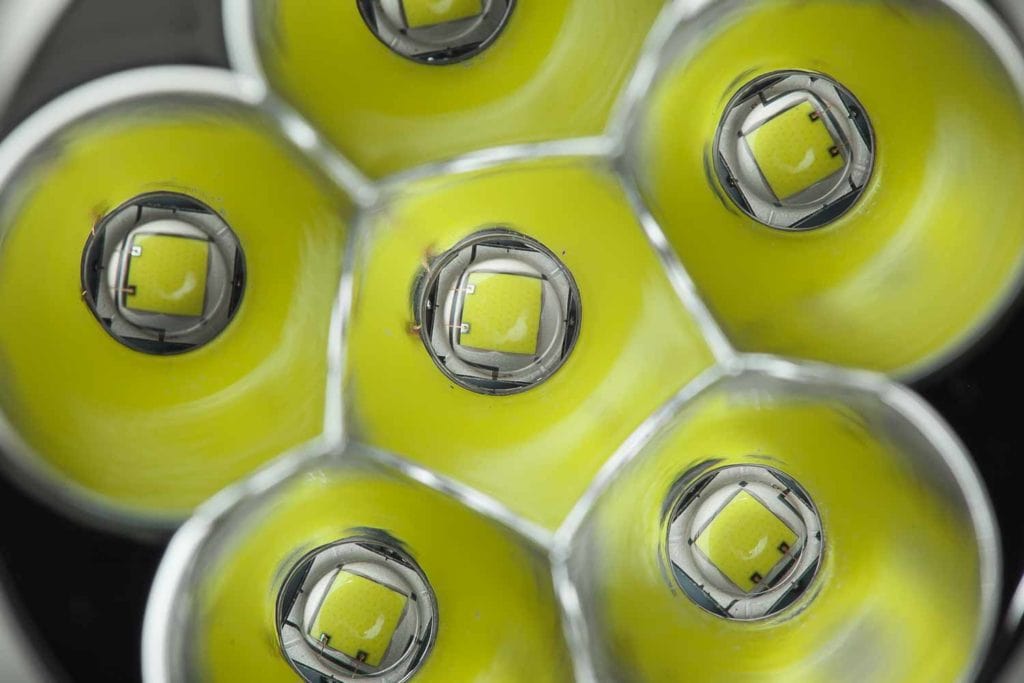
Dimensions:
- Length: 140.4 mm ( 5.517 “)
- Head diameter: 29.03 mm ( 1.93″)
- Body diameter narrow: 24.68mm ( .972 “)
- Body diameter narrow: 46.46mm ( 1.83 “)
Weight:
- Empty: 238 g ( 8.4 oz)
- With batteries: 381.6 g ( 13.46oz)
High Power Flashlights
Size compared to other very bright flashlights:
From left to right: Acebeam X45 II, Fenix LR35R, BLF Q8, Lumintop GT3, Imalent RT90, Acebeam X80-GT, Fireflies ROT66 II.


Driver & User Interface:
Fenix’s user interface for the LR35R is not my personal favorite. I know this is different for every person.
Available modes:
- 5: Eco, Low, Medium, High, Turbo
- Strobe
From OFF:
- Single-click: battery status (the light doesn’t turn on)
- Press and hold -0.5 seconds: On (to last used mode)
- Double click: Lock-out mode
- Triple-click: this does nothing except for locking out as well..
From ON:
- Single-click: cycle through modes from Eco to Turbo and back to Eco again
- Double click: nothing, it just skips 1 mode
- Triple-click: nothing, it just skips 2 modes
- Press and hold 0.5 sec: Turns Off
- Press and hold 3 seconds: Strobe
Shortcuts:
- No, there are no real shortcuts to Eco or Turbo.
Mode memory:
- Yes, and at possibly 10,000 lumens, that is quite a problem when your eyes just adjusted to the darkness. A shortcut to Eco mode would have been a ‘nice feature’ or better said: necessary.
Blinky modes menu:
- Strobe, which is only accessible by holding the switch for 3 seconds from any mode.
Battery indicator:
- When the flashlight is turned off, you can check the battery status by a single-click. The charge status can be seen as follows:
- Green light on: 85-100%
- Green light blinking 50-85%
- Red light on: 25-50%
- Red light flashing: 1-25%
Low battery warning:
- The switch has a tiny LED built behind it. When the battery is running low, the light with start blinking. This doesn’t mean that the flashlight will run out of power anytime soon, but it’s probably better to recharge at this point since they are at low voltage. I would not recommend pulling all the juice from the batteries unless you need to.
Lock-out mode:
- Double click from OFF
PWM:
- Not noticeable by eye. This is what matters.
Firmware / UI Conclusion:
Unfortunately, I’m not very positive about the User Interface. There is no way to know in what mode you turned the light off, because the mode memory will kick in once you turn it off. It doesn’t have a shortcut to Low, nor Turbo so you basically have to ‘guess’ in what mode you turned it off. And on top of that, even Eco mode is not very low. Again, this is a personal opinion, but a Eco of 50 lumens (according to the manual) is not Eco at all, and a Low of 450 lumens doesn’t sound very ‘low’ either.
Batteries and charging:
Fenix includes 2 4000mAh 21700 batteries with this flashlight. Their product code is Fenix ARB-L21-4000P. And I guess the P stands for protection. The protection kicks in at 2.5 Volts.
During the runtime tests, each time the flashlight turned off, the batteries were at 2.5V.
The built-in charging system charges rapidly. At roughly 2.55A, it recharges the 2 batteries in a couple of hours. Probably around 4, since I forgot to really check them every time I charged them. 2.55 amps was the max I could measure with a 3A USB power adapter. 2 batteries at 4000mAh equal 8000 mAh, with quick math: 8000 / 2550 = 3.14 hours to charge the 2 batteries. And even though the flashlight pulls about 2.55A, I’m not sure that the batteries also receive that much current.
The ARB-L21-4000P batteries are protected and have a button top. Unprotected, flat tops don’t work. The contact board on the positive side is built with reverse-polarity protection. This means that the positive contacts are recessed. This is the reason why you can’t use flat tops.
If you are like me, I suggest investing in a good-quality 21700 battery charger. That way, you can charge your batteries while others are being used.
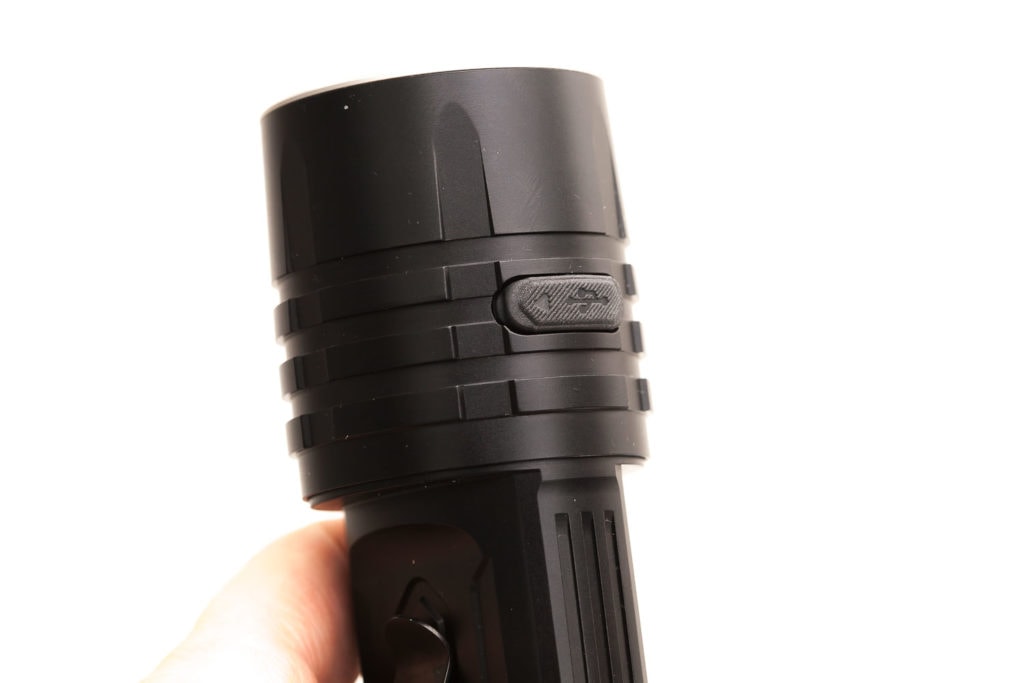
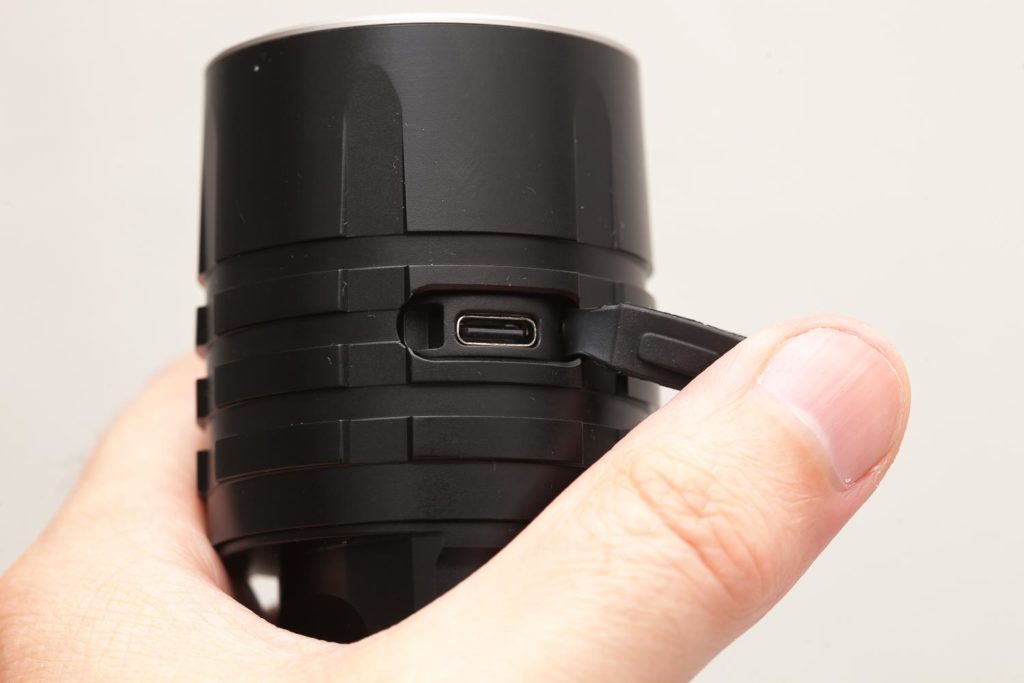
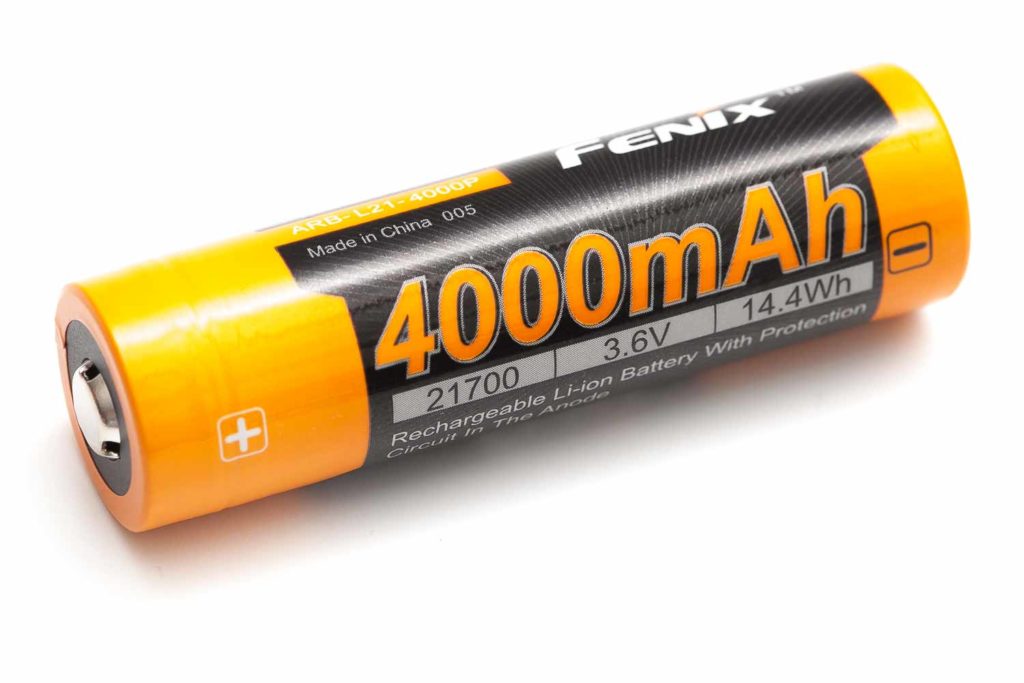
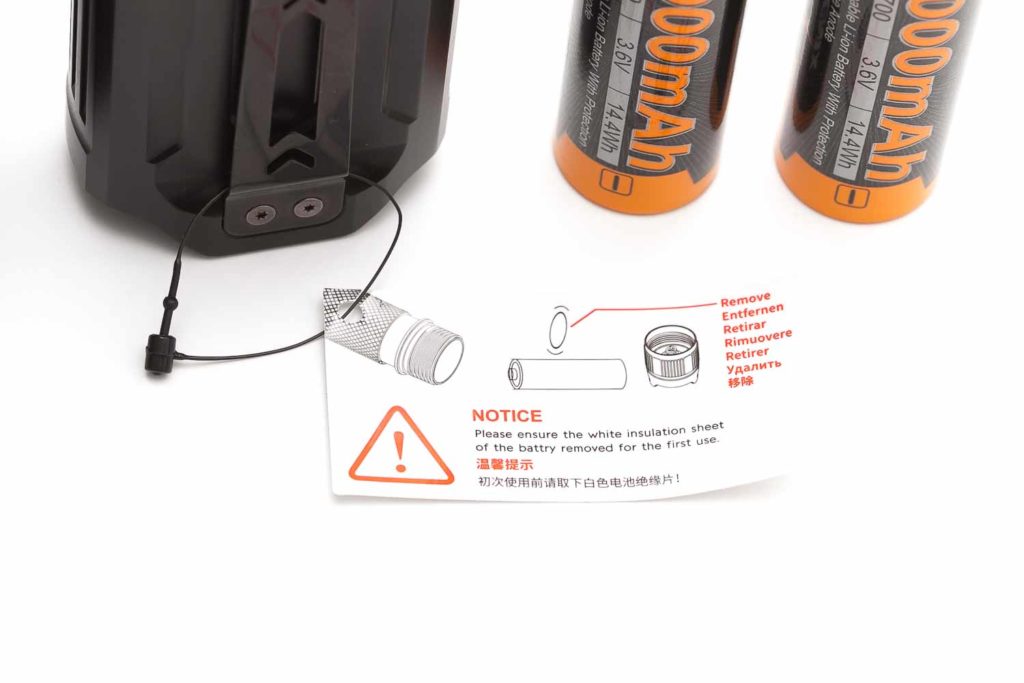
Performance:
Lumen measurements:
All output numbers are relative to my homemade Integrating Sphere. It is set up with an Extech SDL400 Lux Meter for measurements, including a Kenko PRO1D ND-16 filter. The base measurement is done with a Convoy S2+ that has been tested at 255 lumens.
All of my readings were taken from fully-charged Fenix batteries
No Amps are measured because that’s a little difficult with this type of flashlight. There is no tailcap.
Lumens were measured at 30 seconds prior to the runtime tests.
Fenix claimed it to be a 10000-lumen flashlight.
| Mode | Specified | 30 sec | At turn on |
|---|---|---|---|
| Eco | 50 lm | 48 lm | – |
| Low | 450 lm | 485 lm | – |
| Med | 1200 lm | 1,229 lm | – |
| High | 3000 lm | 3,021 lm | – |
| Turbo | 10,000 lm | 8,615 lm | 10,240 lm |
As you can see, Turbo is dropping rapidly from roughly 10240 lumens at startup to 8615 after 30 seconds. This is not exactly timed but roughly this number since the output drops so quickly. When you compare the runtime test, you can see that Turbo and High have about the same output after the largest output drop, but I used the above Lumen measurements (which were done by counting, and not with a timer) to calculate runtimes. I have been using Lumens at startup up till recently but wanted to do it this way since it’s according to the ANSI standards. Unfortunately enough, that comes at a cost of precision, especially with these high-power flashlights! They drop in output just too quickly to really within the first 30 seconds.
Runtime:
The runtime test was done with the 50cm integrating sphere, including the Kenko Pro1D ND-16 filter and Extech SDL400 data logging Lux Meter.
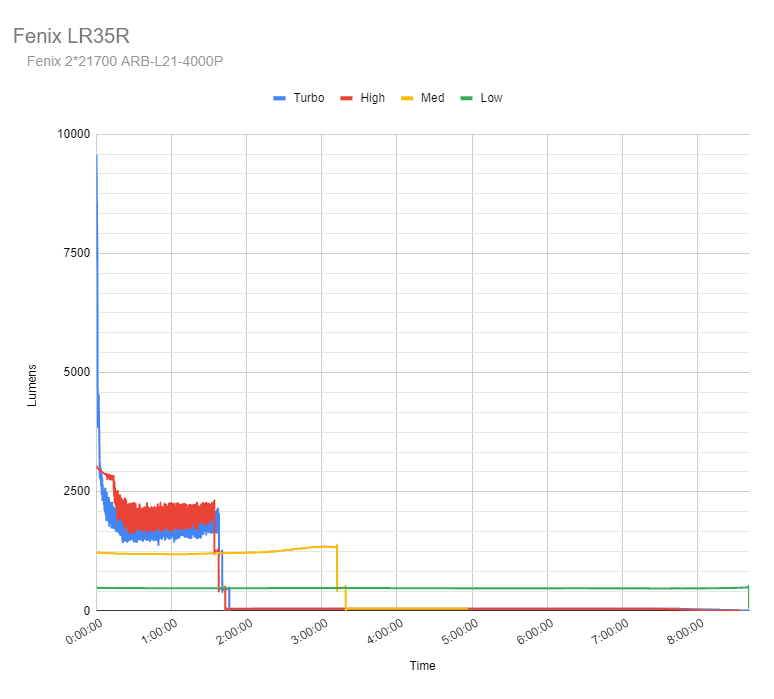
All modes have a long horizontal line. This is at an output between 44 and 48 lumens. Currently, the Battery indicator is blinking red, which means a battery voltage between 1-25%. When the output drops, you get about 7 hours of runtime at 44-48 lumens.
I ran the batteries dry in Turbo and in High. Both times the batteries were measuring 2.5 Volts. I don’t want to hurt my batteries unnecessarily, so Med and Low are cut off before they were emptied so much.
I didn’t test Eco mode since I need to use the Integrating Sphere for other tests, and the runtime graph will look extremely boring.
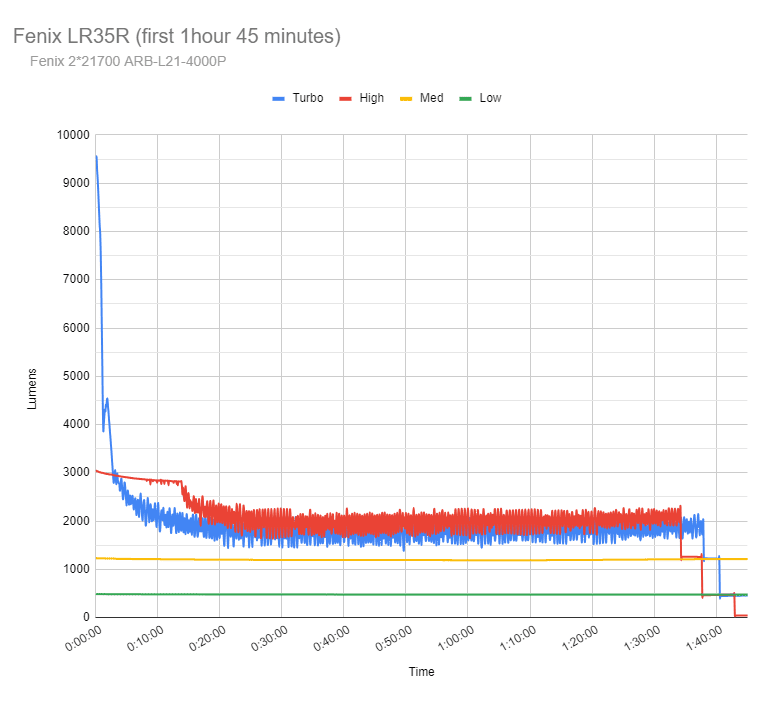
The zigzag output is very common for Fenix Flashlights. I think all my Fenix flashlights have this zigzag output. Even the manual shows this.
High and Turbo range between 1500 and 2200 lumens. It’s not bad, but it’s still not extremely interesting.
Throw measurement:
Measurements were taken outdoors at 20 meters.
Using Turbo mode, I get:
- Outdoors (20m): 52,000cd = 456 meters / 499 yards throw
That’s quite a bit lower than the advertised 63200 cd. I measured long-distance flashlights, so I used a 20-meter distance. That should cause this much of a difference, I would suppose. In terms of throw, it’s underperforming.
Beamshots
For the following beamshots, I used a Canon EOS 5D Mk2 and a 50mm lens. manual settings: ISO1600, 1/4sec , F4, 5000K
The shed is about 65 meters / 71 yards away.
Now, compared to 3 other well-known powerful flashlights in the community. Namely, Fireflies ROT66 II, Emisar D18, and BLF Q8.
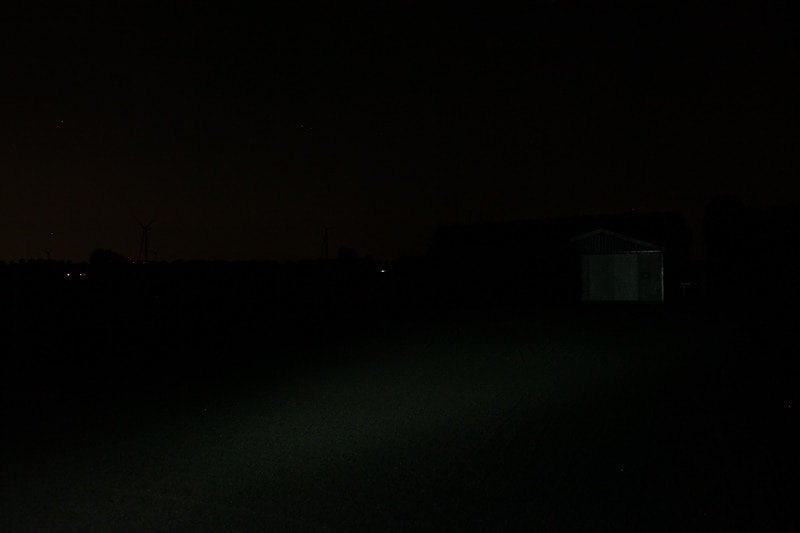
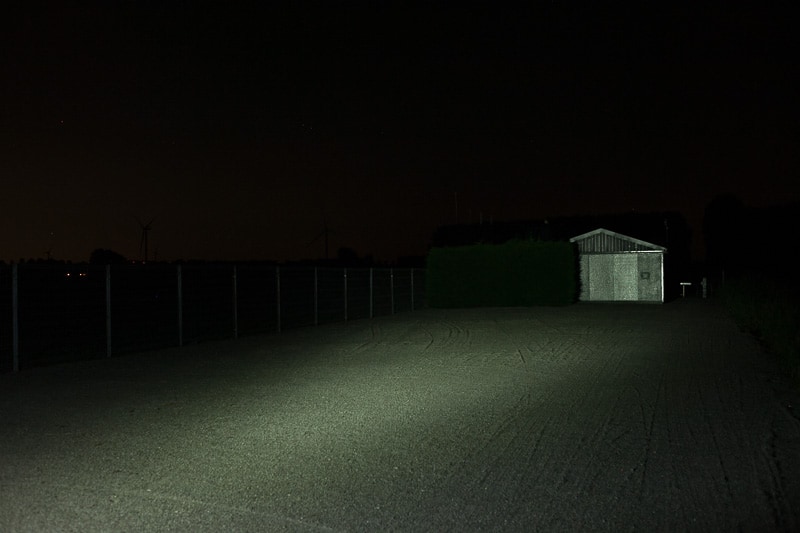
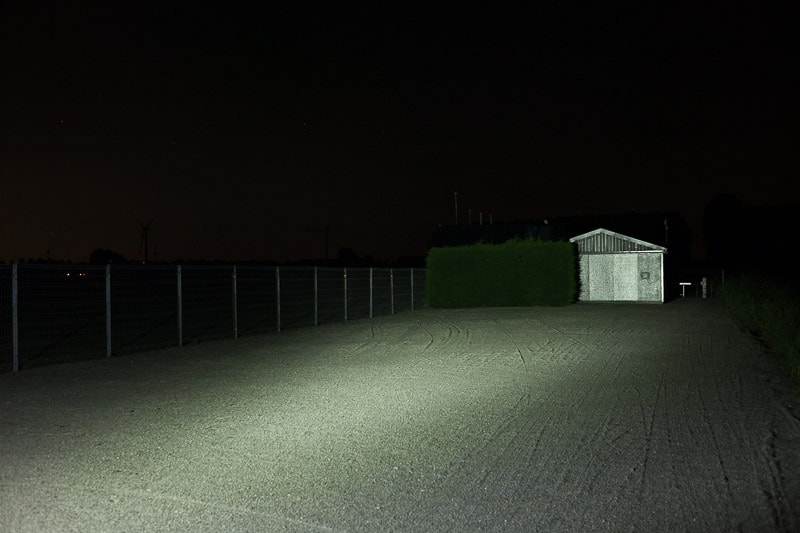
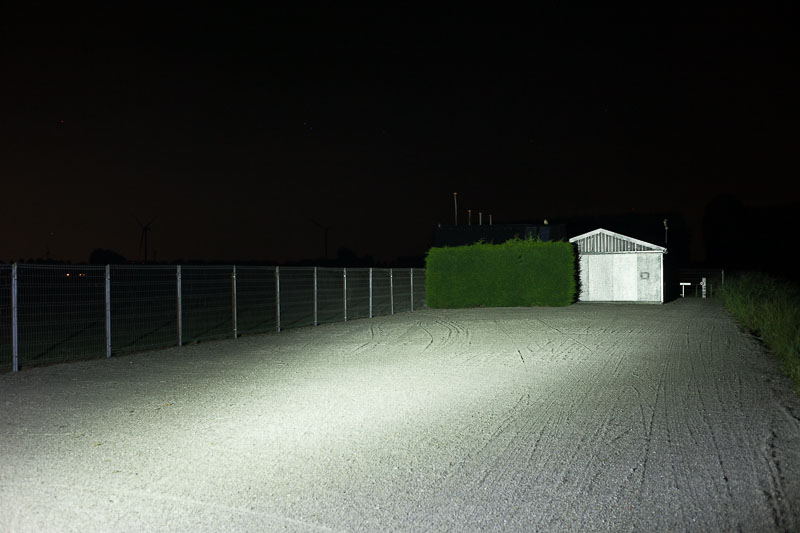
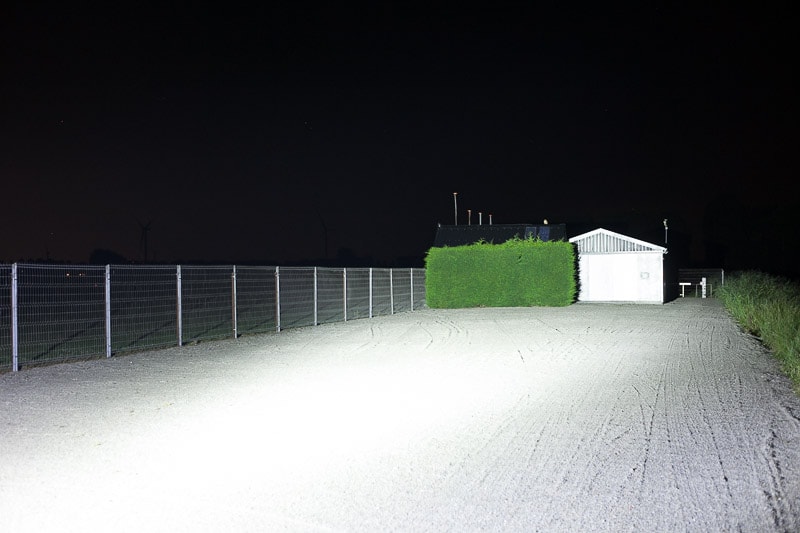
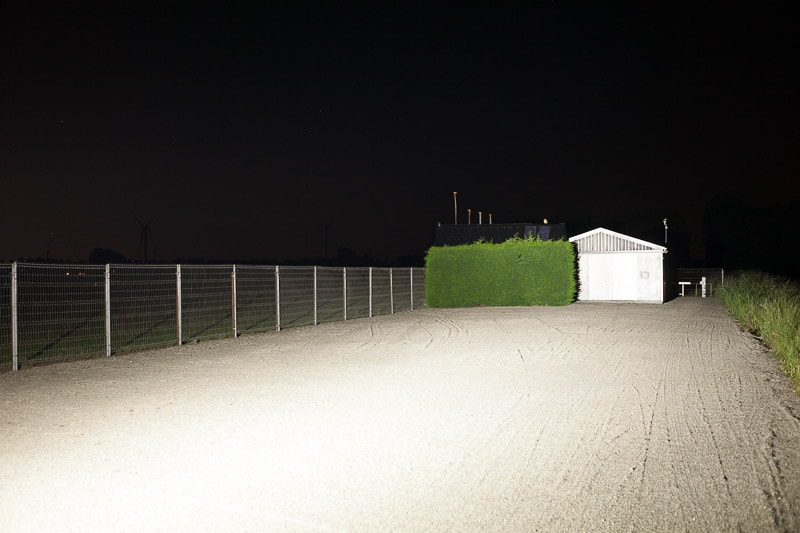
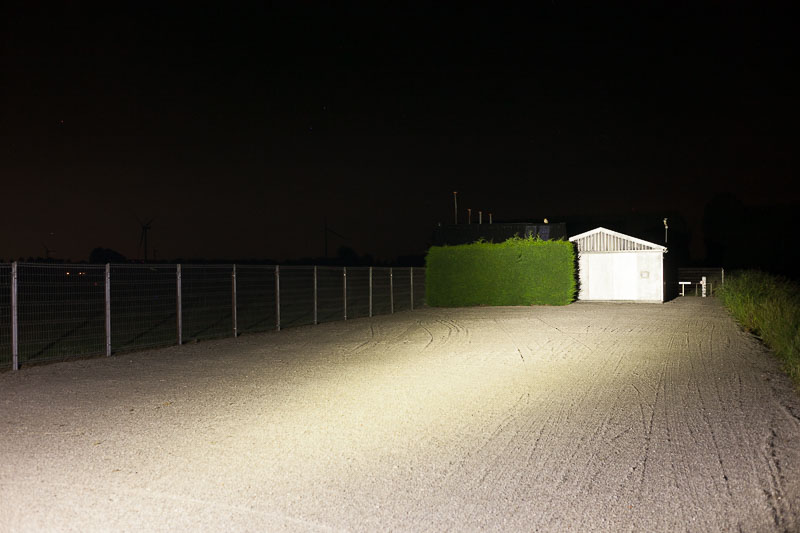

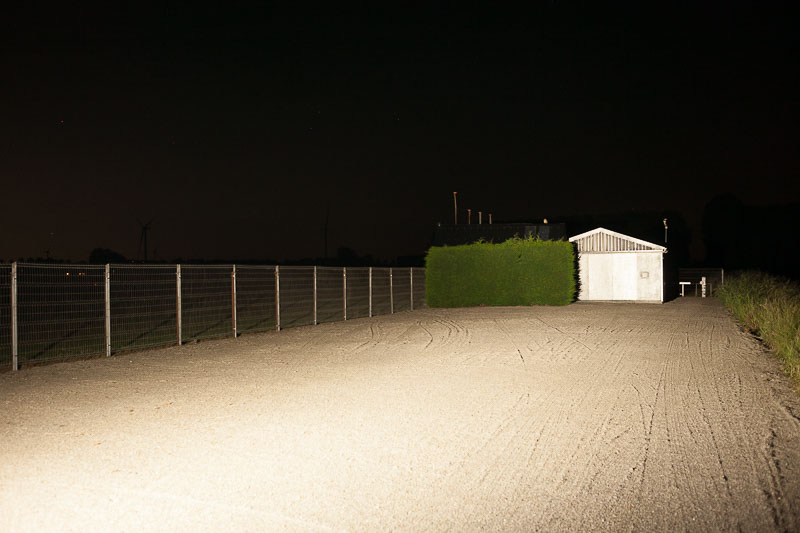
Disclaimer: This flashlight was bought with my own money. I have not been paid to review, nor have I been holding back on problems or defects.
Overall conclusion
Pros:
- Fits really nicely in the hand
- Powerful
- Accessories, holster, lanyard, batteries
- Built-in charging system (can be helpful for newbies)
Cons
- The UI: no real low mode, no shortcut to Turbo or Low

Rating: 4 stars ★★★★
I think it’s a great flashlight for what it offers, but there are definitely some cons. One of the first things you’ll notice is the packaging. Mine arrived in a non-optimal condition. The UI isn’t my favorite with mode memory. This could be fine if you have shortcuts to Turbo and Low, but the LR35R doesn’t.
Also, Eco mode is too high (50 lumens), and Low mode is even 450 lumens. The runtime is pretty decent with 2*21700 batteries. When the batteries are low, you’ll get about 7 more hours to replace them before the Low Voltage Protection kicks in. With all these little ‘nuisances,’ I can’t give it 5 stars, but perhaps 4 stars.
Buy your Fenix LR35R with a discount
Get 10% off every purchase at Fenix Lighting US, by using our exclusive 1lumen discount code: 1lumen10
1lumen selects and reviews products personally. We may earn affiliate commissions through our links, which help support our testing.